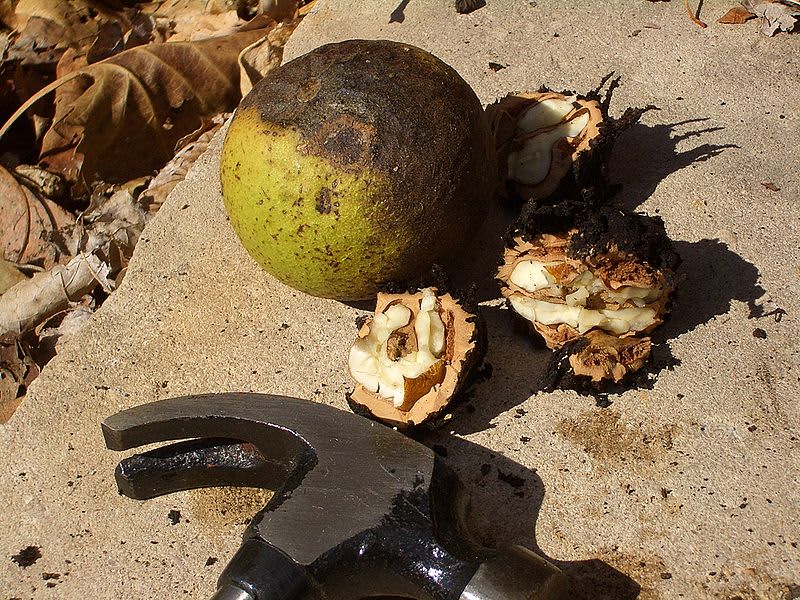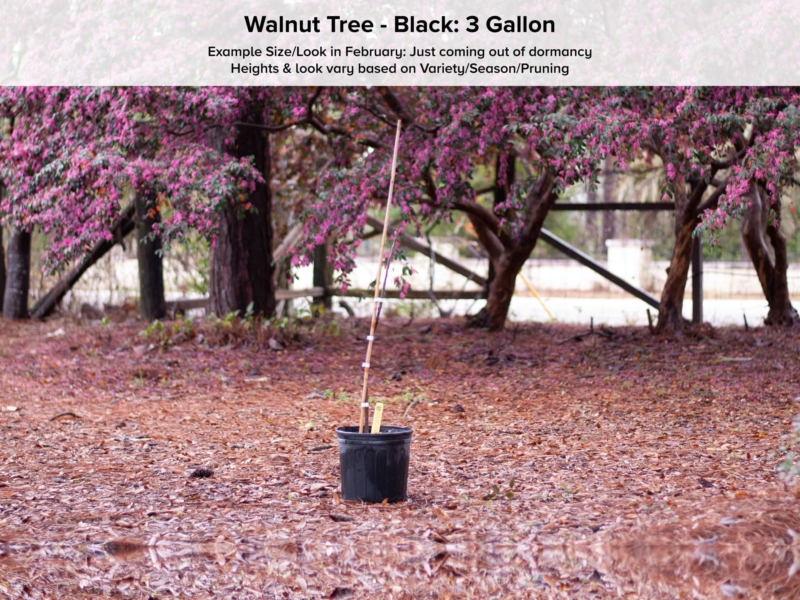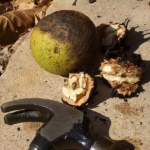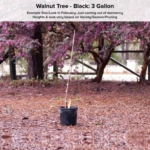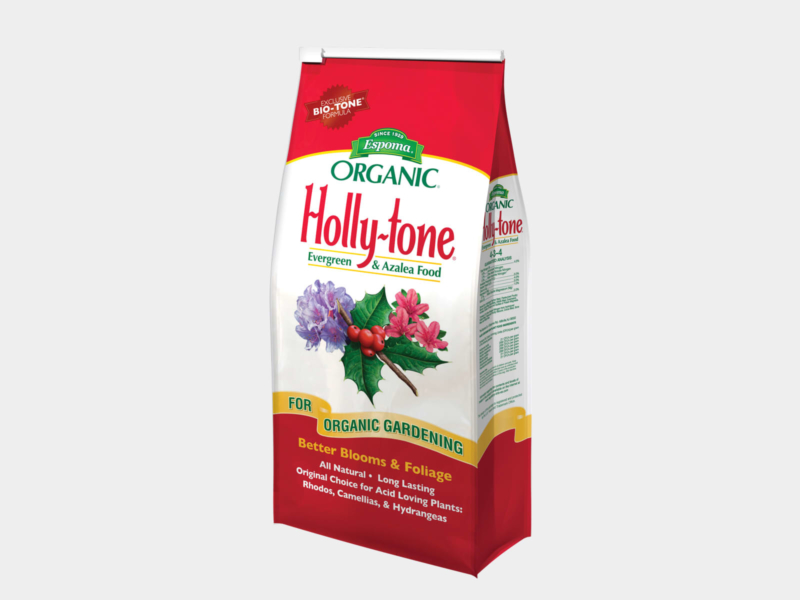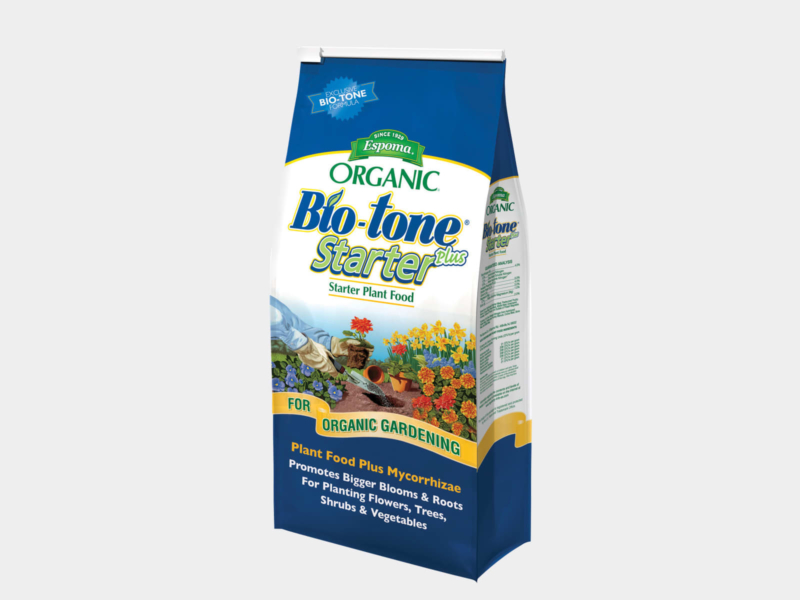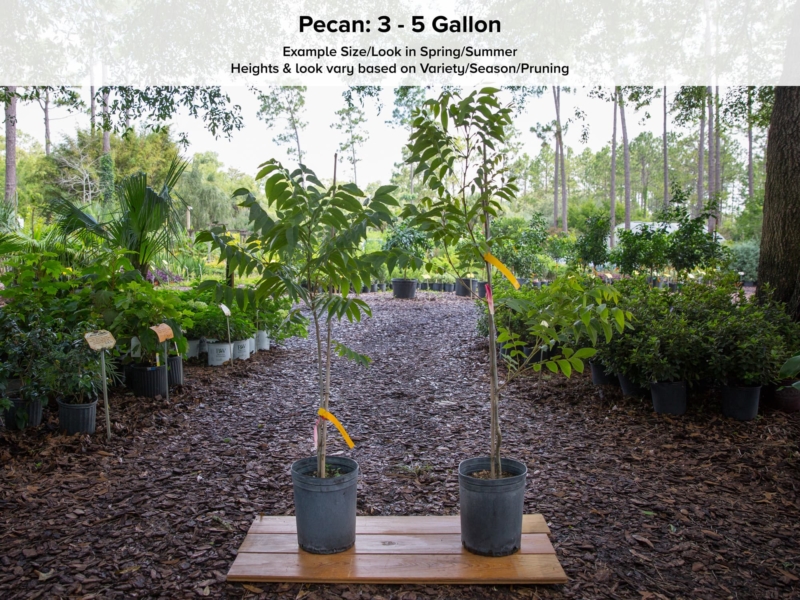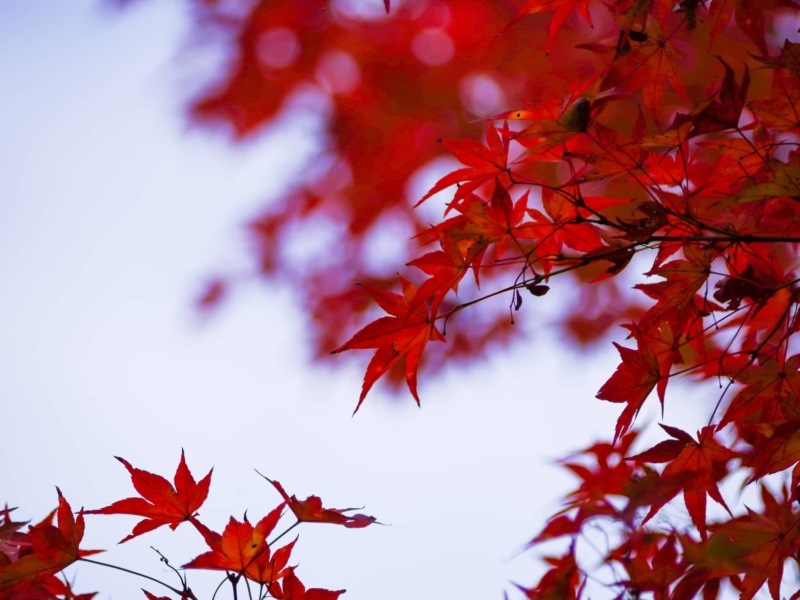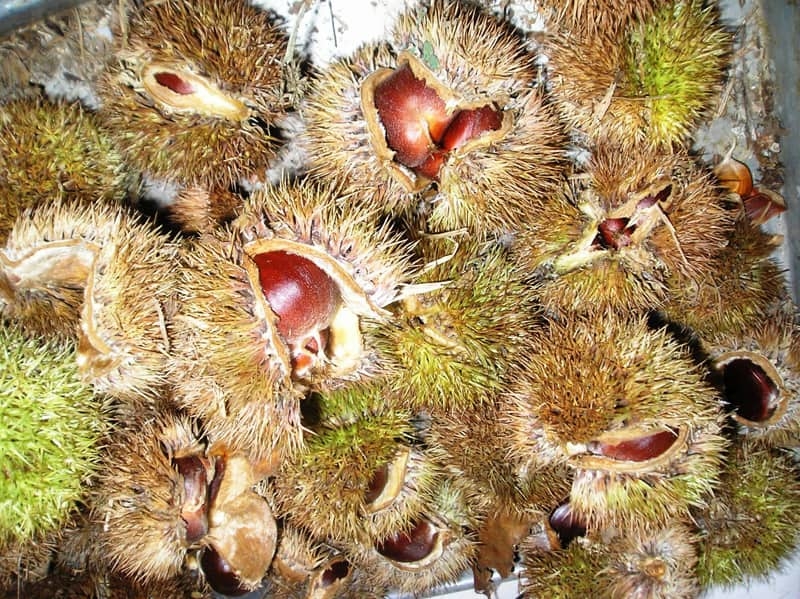Recommended with Black Walnut Tree
- Product Description
- Planting & Care
- Shipping Info
Black Walnut Tree: Nature’s Finest Heirloom
About the Fruit
The Black Walnut is a treasure of the American landscape, offering not only edible rewards but also rich historical significance. This robust nut, encased in a thick, hard shell, is renowned for its distinctive, bold flavor. Savored by both wildlife and humans alike, it lends itself to a variety of culinary uses, from baking to gourmet treats. Indulge in the unparalleled taste of wild-crafted perfection with each Black Walnut harvest.
What to Know About the Tree
The Black Walnut Tree stands as a majestic addition to any space, symbolizing strength and longevity. This deciduous tree flaunts luscious, green foliage that transitions to a golden hue come fall. With its deep roots and towering stature, often reaching 50-70 feet, it commands presence. Not only is the tree valued for its nuts, but its timber is also highly sought after for its fine quality. Its special feature, juglone, naturally present in the roots, leaves, and bark, is a compound that can inhibit the growth of certain plants around it, so consider its placement carefully.
Harvest Season
As the cooler days of early autumn set in, the Black Walnut Tree signals it’s time to gather its bountiful crop. The nuts, typically ripening from early to late fall, encased in a green, fleshy husk, drop to the ground, ready to be harvested. The harvest season is a time-honored ritual, connecting us to the land and the rhythm of nature.
Enhancing Your Fruitscape™
Imagine a fruitscape™ that not only provides a bountiful harvest but also serves as a living legacy. The Black Walnut Tree is an imposing yet elegant choice, perfect for creating a stately boundary or a naturalized backdrop in larger landscapes. Its lush canopy provides shade in the summer, making it an attractive retreat for both you and local fauna. Integrating this noble tree into your fruitscape™ adds dimension and a sense of grandeur, while supplying a seasonal abundance of rich, wild nuts.
At Just Fruits and Exotics, our Black Walnut Trees are shipped 100% in pot, reflecting the care and quality akin to an in-person nursery visit. Our packaging is meticulously crafted to ensure your tree arrives safely and ready to thrive. With decades of experience as a family-owned business, we’ve earned national acclaim as a trusted online plant nursery. We’re here to infuse your fruitscape™ with the enduring beauty and flavor of the Black Walnut Tree.
| Cold Hardy | 0-5° |
|---|---|
| Container Plant | No |
| Grafted | No, on its own root system |
| Growing Zone | 7A, 7B, 8A, 8B, 9A, 9B |
| Mature Height | 50-75 FT |
| Mature Width | 30-40 FT |
| Pollinator | Need at least two for cross-pollination |
| Spacing | 30-40 FT |
| Sunlight | Part to Full |
Recommended Fertilizers
Starter Fertilizer: Kickstart with Espoma Organic Bio-tone® Starter Plus. This potent blend boosts root mass and aids in mitigating transplant shock, ensuring your plants thrive in their new home.
Maintenance Fertilizer: For continued growth and fruit production, we recommend Espoma Organic Tree-tone Fertilizer. Designed specifically for fruit trees, this balanced formula nourishes your plants, promoting vibrant growth and bountiful harvests.
Fruitscape™ with Walnut Trees
Discover the grandeur of Fruitscaping™ with our majestic Walnut Trees. These impressive trees not only bring an air of elegance to your landscape but also offer a plentiful harvest of delicious and nutritious walnuts.
Walnut Trees are known for their commanding presence, featuring a tall stature, broad spreading canopy, and attractive pinnate leaves. Their lush foliage provides shade during the summer months, creating a cool and inviting outdoor space. In the fall, the leaves transform into a tapestry of golden hues, adding a touch of warmth to the landscape.
Beyond their ornamental value, Walnut Trees produce a bountiful harvest of delectable walnuts. Known for their rich, buttery flavor and versatility in culinary creations, walnuts are a favorite among home cooks and chefs alike. Enjoy them as a snack, incorporate them into baked goods, or use them to enhance the flavors and textures of salads and other savory dishes.
Walnut Trees thrive in full sun to partial shade, and they prefer deep, well-drained soil with a slightly acidic to neutral pH level (pH 5.5-7.5). Adequate soil moisture is essential for the optimal growth and development of Walnut Trees, especially during dry periods. Regular watering and mulching around the base of the tree help to retain moisture and keep the roots cool.
These long-lived trees require minimal maintenance once established, but occasional pruning may be necessary to maintain a healthy structure and encourage optimal fruit production. Pruning also helps to control the size and shape of the tree, making it more manageable in your landscape.
Embark on a Fruitscape™ adventure with Walnut Trees and relish in the beauty and abundance they bring. Whether you desire the shade and elegance of these majestic trees or the pleasure of harvesting and enjoying your own fresh walnuts, Walnut Trees will leave a lasting impression on your landscape and in your culinary creations.
Growing Guides
You can find many planting & care guides on our growing guides page.
Shipping Restrictions
Unfortunately, We Cannot Process Orders to California, Hawaii, Alaska, or Internationally: Please note that due to specific agricultural regulations, we’re unable to ship any plants to the states of California, Hawaii, and Alaska, or outside the United States. Additionally, citrus trees can only be shipped within the state of Florida.
Shipping Information
Before Your Plants Arrive: You can find many guides on unpacking, planting, & care, on our growing guides page.
The Journey From Our Nursery to Your Door: We NEVER ship our plants bare root. Your plant will travel in the very container in which it was nurtured. We thoroughly prune and water them before packing, and make sure they’re well wrapped to retain moisture during transit. It’s as though you’ve personally collected them from our nursery!
Choose Your Ship Date: We understand you’ll want to be available when your plant arrives. Our checkout process features a handy calendar that allows you to choose the Monday on which you want your plant to ship. Depending on your location, you’ll likely receive your plant by Wednesday, Thursday, or Friday of that week. Once shipped, UPS will generate a tracking number and send it to the email you provided. You can then follow your plant’s journey and ensure someone is available to unpack it on arrival day.
Click Here To View Our Shipping Page For More Information & Packing/Unpacking Plants Videos
Growing Calendar
- Planting
- Pruning
- Harvest

